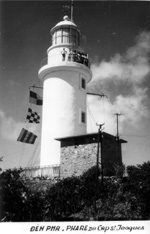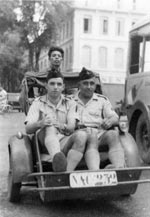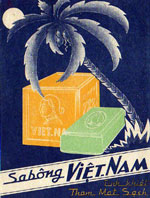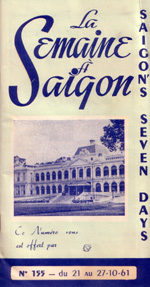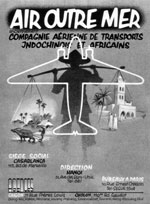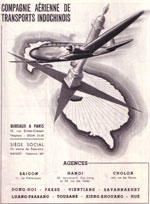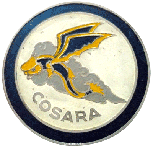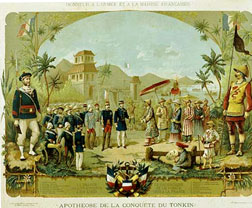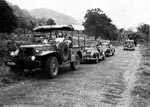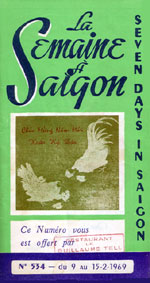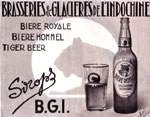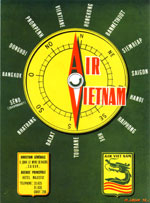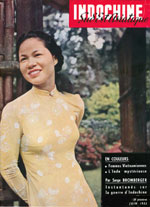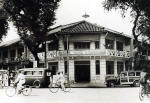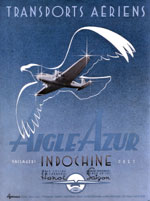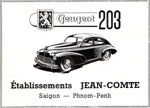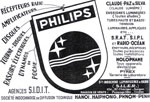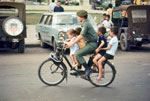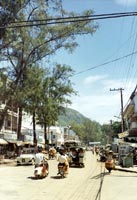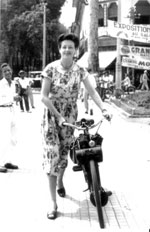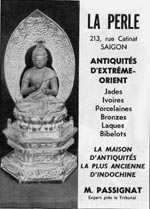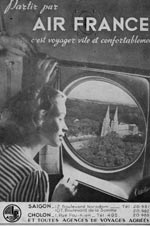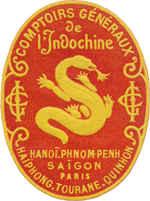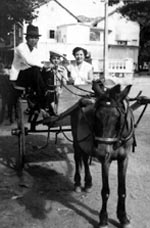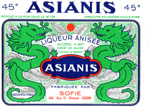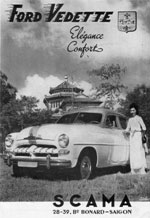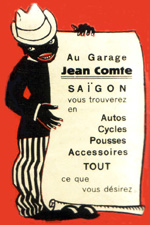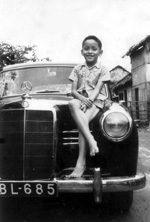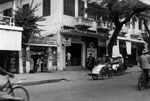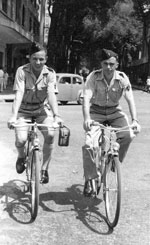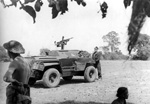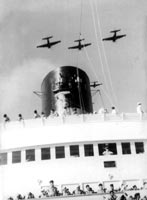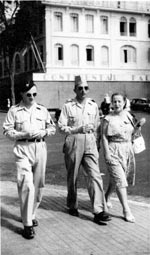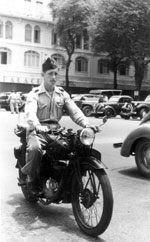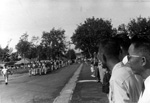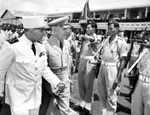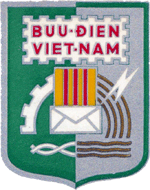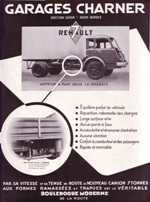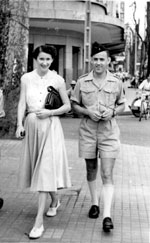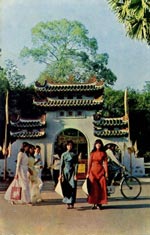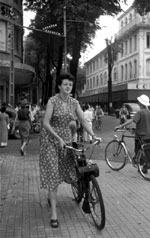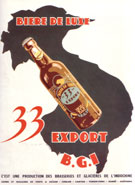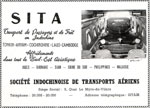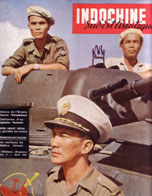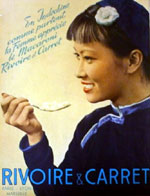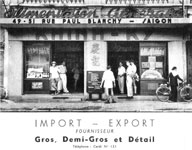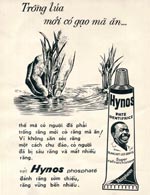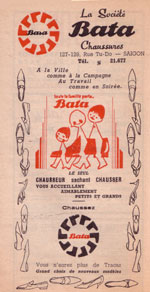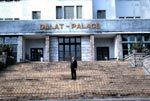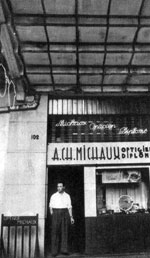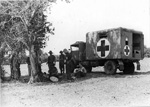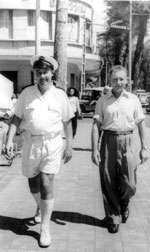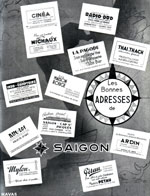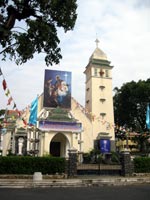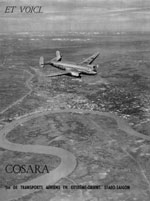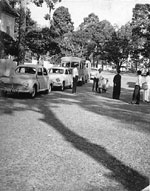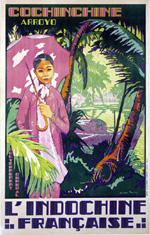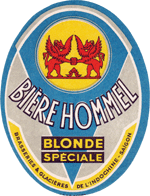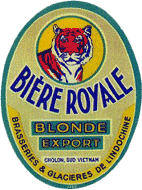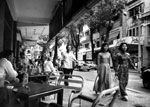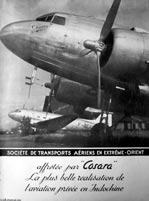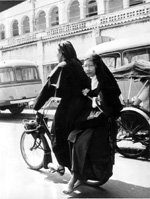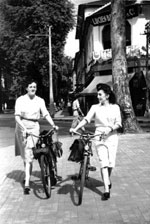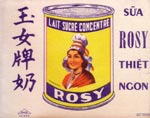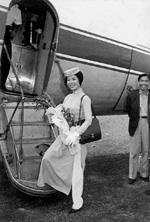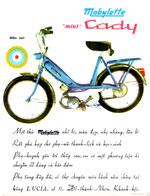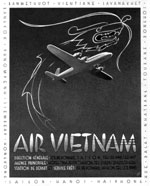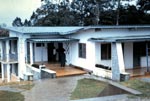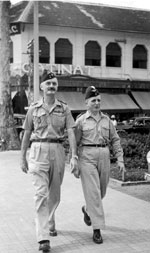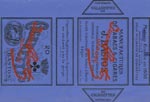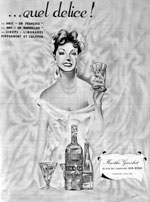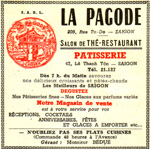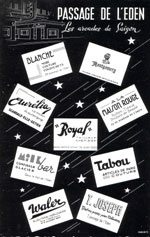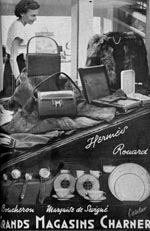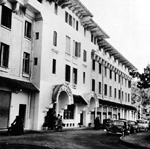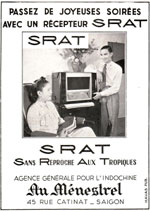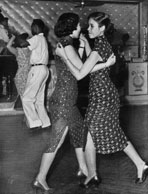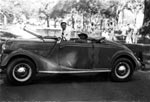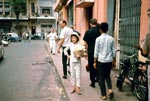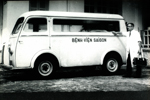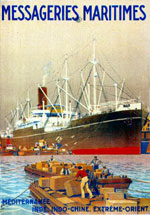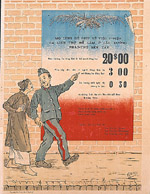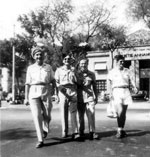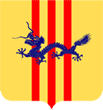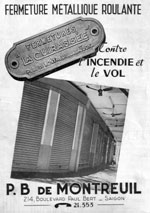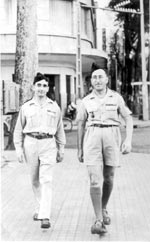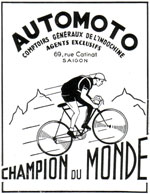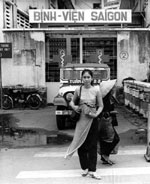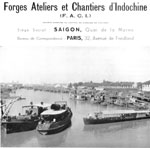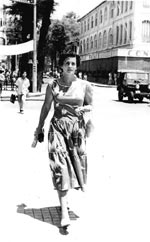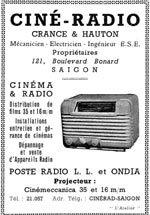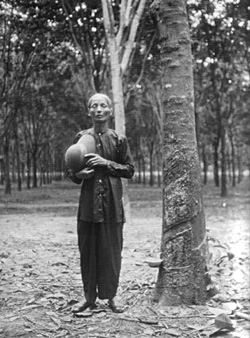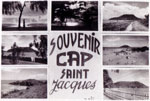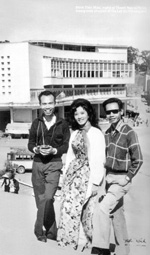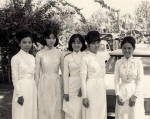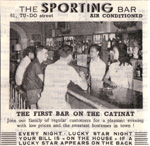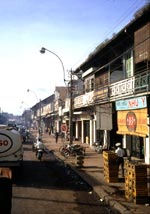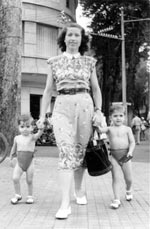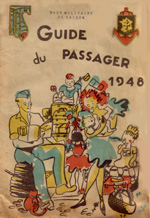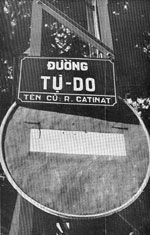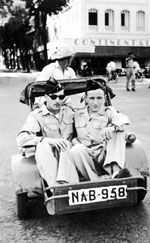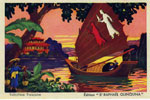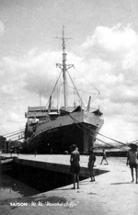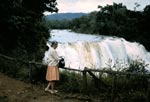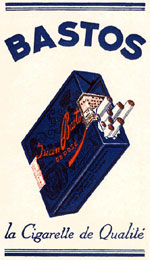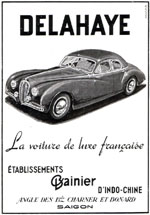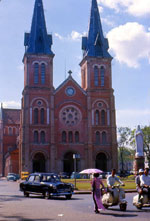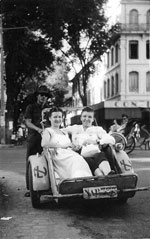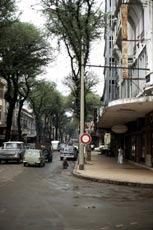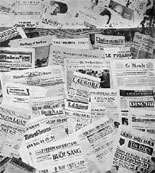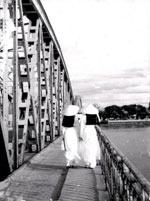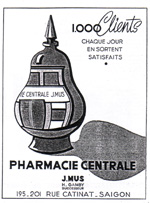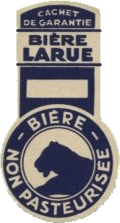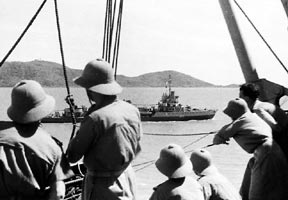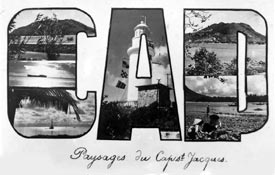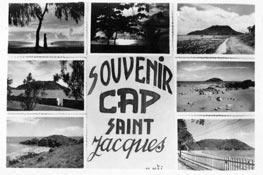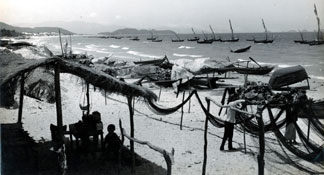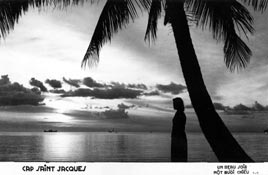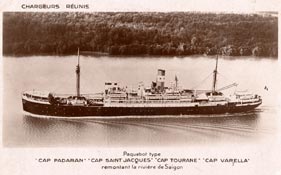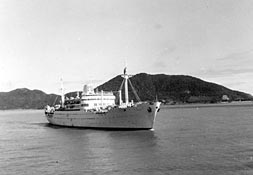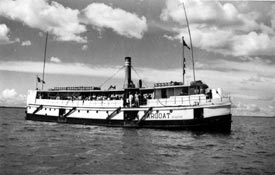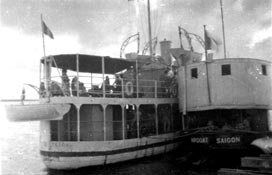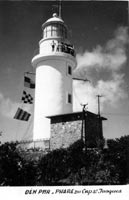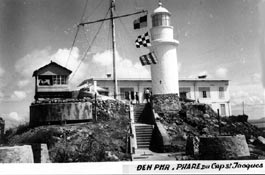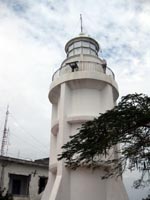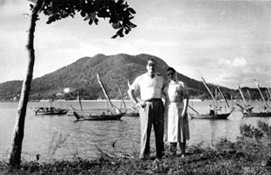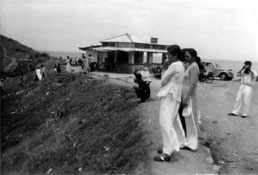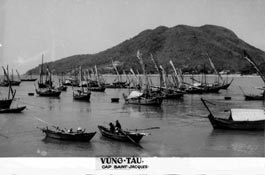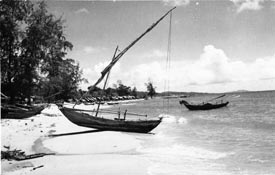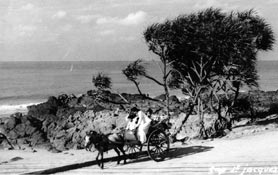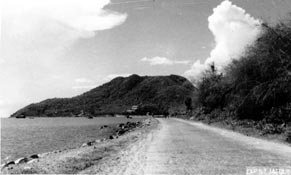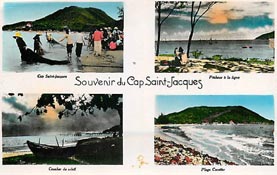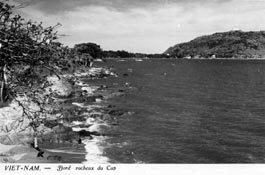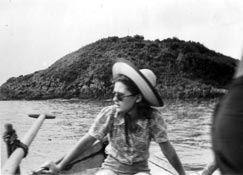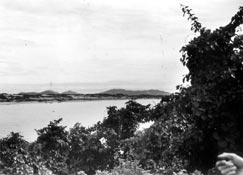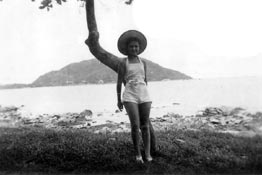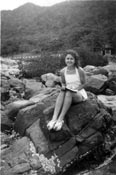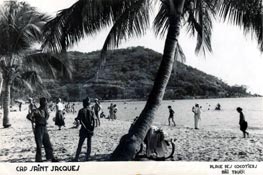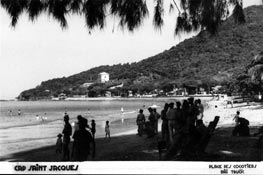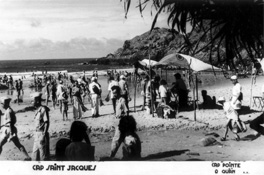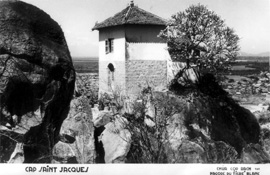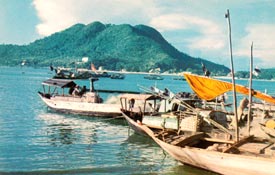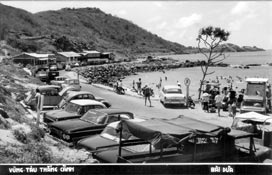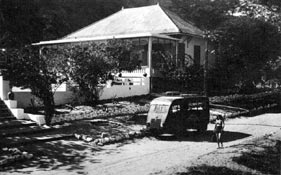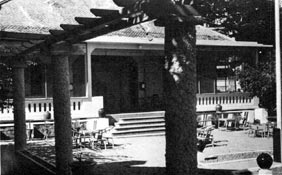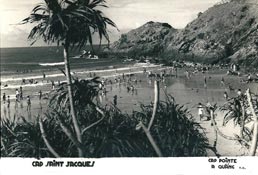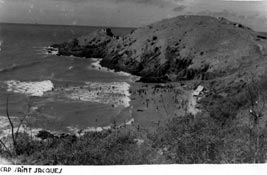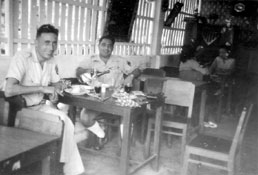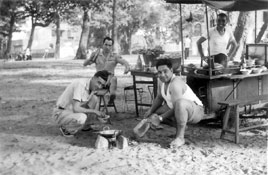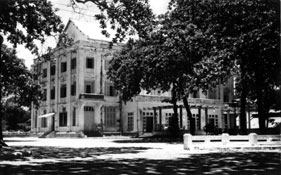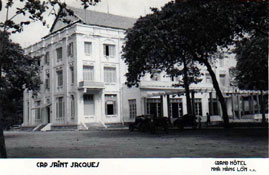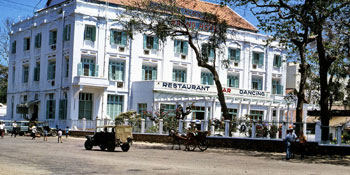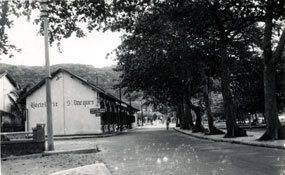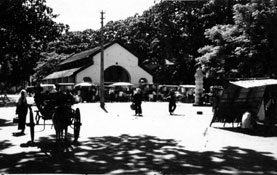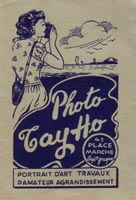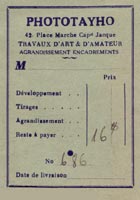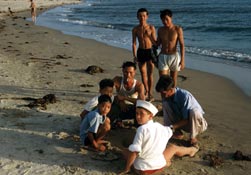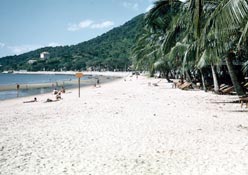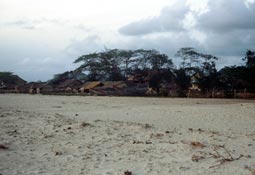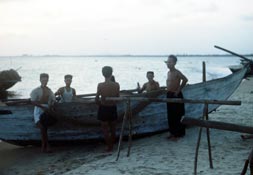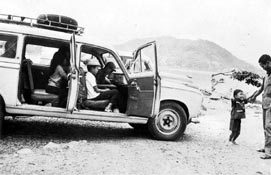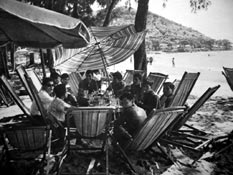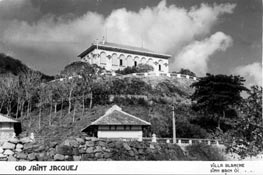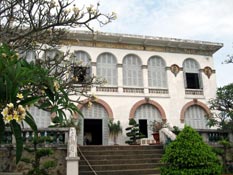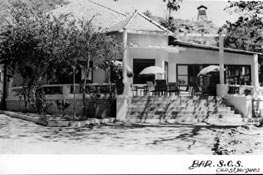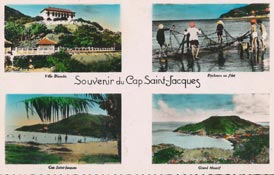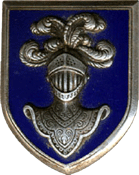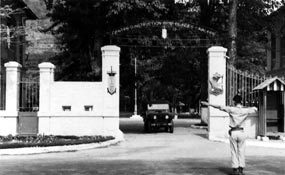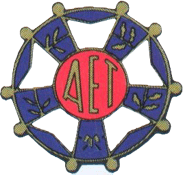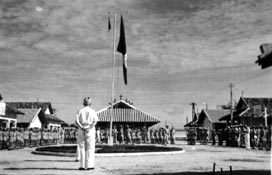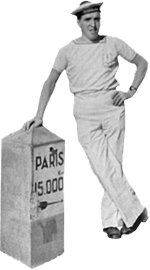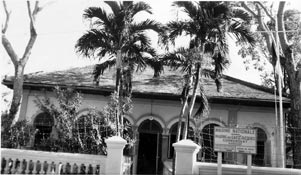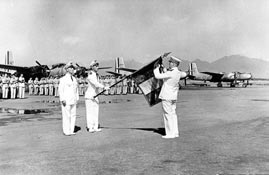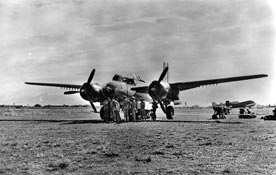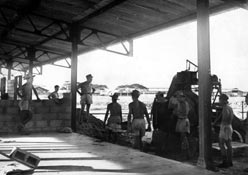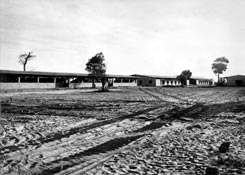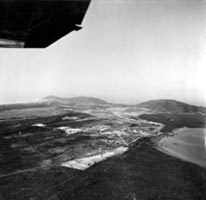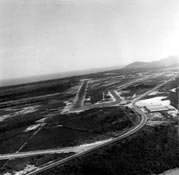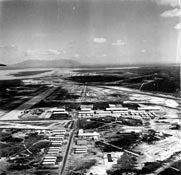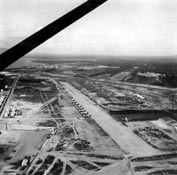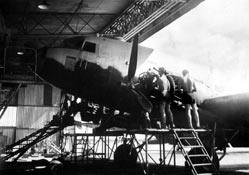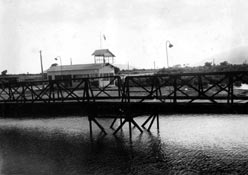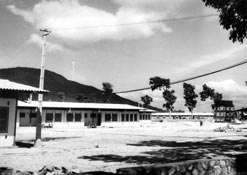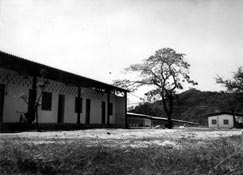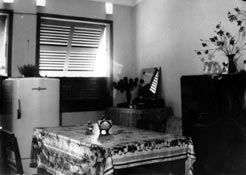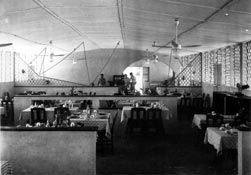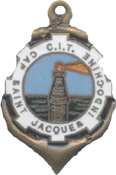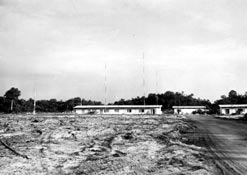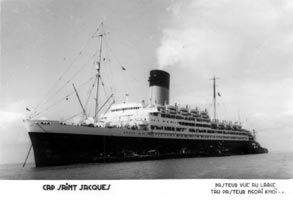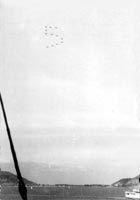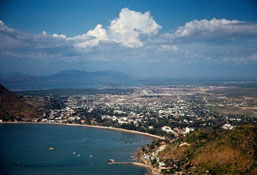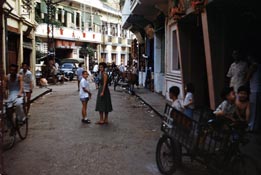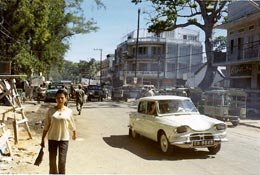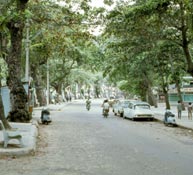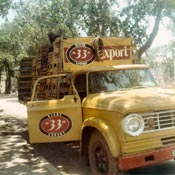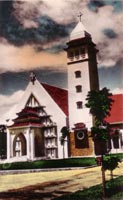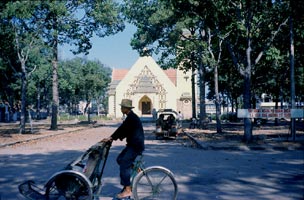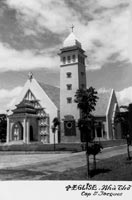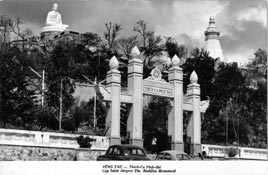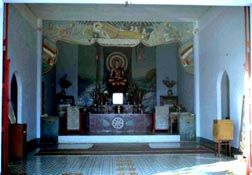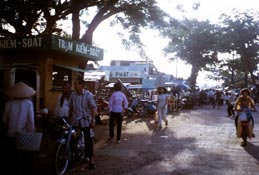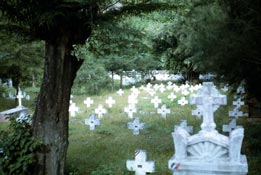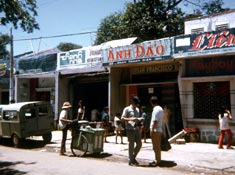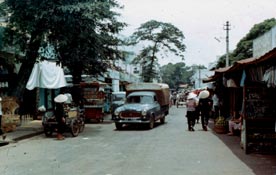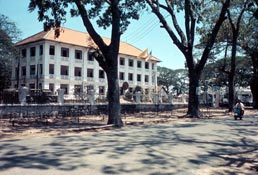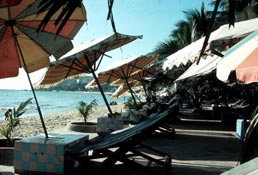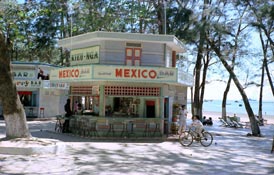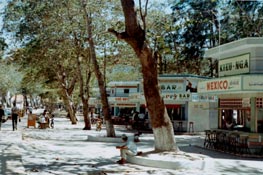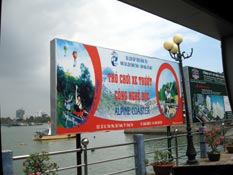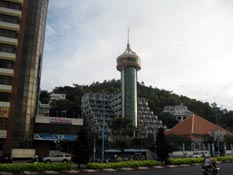
Cape St. Jacques
Vũng TÃ u
From Marseille, the voyage could last up to two months, depending on the ports of call: Mers el Kébir, Alexandria, Port Said, Djibouti, Aden, before reaching the Indian Ocean, then Colombo, Singapore â Cape St. Jacques is the first land seen by travelers arriving in Indochina.
Cape St. Jacques is located at the end of a small peninsula, 125 Km. Southwest of Saigon at the mouth of the Donnai (Dong Nai).
It was named by Portuguese navigators who sailed along this coast in the 15th century and named it St. Jacques.
Paul Doumer, Governor General of Indochina from 1897 to 1902 built a manor house, the White Villa (in Vietnamese: Bach Dinh), and to this day it is a visual landmark for Vung TÃ u. For decades, Cape St. Jacques was the mandatory course for any traveler going to Indochina by boat. .
Photo taken by François Sully.
François Sully (1927-1971) as a French journalist and photographer best known for his work during the Vietnam War. Sully was one of the earliest journalists to cover the Vietnam War and spent 24 years in Indochina. At the time of his death in a command helicopter crash near the Cambodian border, he was viewed as the dean of the Saigon press corps.
Un beau soir d'avril 1955 au Cap Saint-Jacques
A beautiful April evening in 1955 at Cape St. Jacques.
Ocean Liners near Cape St. Jacques
Left photo: A Cape St. Jacques-type liner (Chargeurs Réunis Line) steaming up the Saigon River.
Right photo: The liner âCambodgeâ (Messageries Maritimes Line) off Cape St. Jacques.
The Cape St. Jacques Line in Saigon
The ship âArgoatâ provided daily service from Cape St. Jacques (Rach Dua) to Saigon (dock near the Hotel Majestic), and the other ship providing the connection in the other direction was the âArmorâ.
With the Armor and the Argoat Breton sailors were quite in evidence in this part of Indochina!!
At the end of the war in Indochina in 1954, the newly secured road would outpace the river link by halving the travel time, and the line would be abandoned in 1955.
Today the trip by hydrofoil (of Russian manufacture) from Cape St. Jacques (Vung TÃ u) to Saigon is made in 1 hour, 30 minutes instead of the 5 to 6 hours according to the tides at the beginning of the â50âs.
The Lighthouse
Den Pha
The Cape St. Jacques lighthouse is located on top of the Telegraph mountain (now Nui Nho), with the present structure having been built in 1911.
It is 3 meters in diameter and 18 meters tall; next to it are four old French cannons (10 meters long and weighing several tons). They were formerly used to defend the region against naval attacks.
The lighthouse provides an exceptional panoramic view over the entire Cape St. Jacques (Vung Tau).
It is fitted with a lighthouse lens designed by Henry Lepaute Company, located at 11, Desnouettes Street in the 15th district of Paris.

Souvenirs from Cape St. Jacques
Archinard Island
Cape St. Jacques and Archinard Island June 1940.

The sandy beach opens onto the Baie des Cocotiers
(Coconut Bay, Bai Truok)
During the â50âs, Cape St. Jacques was a beach resort and a R&R center for French soldiers.
- The Mayorâs office was located on the Boulevard des Landes.
- The Grand Hotel was on Lanessan Dock (across from Coconut Beach).

Account of a French soldier staying at Coconut Beach on Cape St. Jacques:
"â¦And this is why I was granted several days of R&R at Cape St. Jacques and thatâs also where I took my first midnight swim!!!
What a pleasure it was to go out to the beach in the evening and to watch those large-shrimp fishermen, who, nearly naked in the water pulled in their nets where one could see the fluorescent eyes of these little creatures that we ate the next day.
It couldnât last, but we knew that. Itâs not like what happened to those who came after us, and who were massacred in the same place where we were.
Jean Gourbil Decembre 1950
Indeed, on July 21st, 1952, an attack by the Vietminh resulted in 20 killed and 23 wounded in an R&R center at Cape St. Jacques.
The R&R center at Cape St. Jacques..
The Cap Pointe (A Quang)

Cape St. Jacques in 1953
French soldiers eating in Cape St.Jacques restaurant (January 1953).
Preparing a meal on the Cape St.Jacques beach at the same date.
Cape St. Jacques city Center in 1953
The Grand Hotel
The Grand Hotel (Cape St. Jacques) - Nhà Hang Lon (Vũng Tà u)

Left: St. Jacques Hostelery.
Right: Market Square.
Photo Tay Ho
Photo Tay Ho - art portrait, amateur work, enlargement photos.
42, Market Square Cape St.Jacques.

Cape St. Jacques in 1955
Fishermen in Long Hai (Cape St. Jacques)
© The color slides were taken by Mr. Emile Poizat in 1955.
The beach resort of Vung TÃ u has attracted tourists for decades notably those from Saigon arriving every weekend.

The White Villa (or Governorâs Villa)
Bach Dinh (or Dinh Toan Quyen)
The White Villa was built in 1898 by the architect Antoine Genet at the request of Paul Doumer, Governor-General of Indochina and future president of the French Republic.
The exterior walls are decorated with pearls and Greek-inspired statues.
It was later used to receive numerous dignitaries of the South Vietnamese Republic (notably Ngo Dinh Diem also his wife madame Nhu and Nguyen Van Thieu) as well as American soldiers; today the White villa is a museum.

The S.O.S. bar at Cape St. Jacques
At the end of the â40âs and beginning of the â50âs, the S.O.S. bar was the meeting spot for the soldiers of the French Expeditionary Corps on R&R.
The charming bungalow lost in the greenery, thatâs the S.O.S., a bar and restaurant lost in Indochina. You can get a drink (neat), you can eat (well), and you can dance (if you want to).
Its terrace swept by the sea breeze is the refuge of poets and dreamers (indeed, quite often both).
You can gaze at the sea to the horizon, white at dawn, red and gold at sunrise then going through purple pink and blue before the divine star sinks back into it.
At night, the lights of the junks and the luminous ray of the lighthouse play strange symphonies.
Jean Petersen
The French Army at Cape St. Jacques
The Armored Cavalry Training Center at Cape St. Jacques was operational from 1945 to 1955.
The troop children of Cape St. Jacques
The raising of the colors in the presence of captain Morgant at Cape St. Jacques.
The School for Military dDependant Eurasian children of Dalat (EETED) was founded in Dalat (Annam) in 1939, with the motto âLearn in order to serveâ.
Following the expansion of recruitment, the word âEurasianâ was dropped and the acronym became EETD.
In 1954, the school was moved to Cape St. Jacques (Cochin China), and then returned to France on February 2nd, 1956, Fréjus in the Var Department.
(Source: Wikipedia)
The French Navy
The Commandantâs office at Cape St. Jacques is located on Rue de la Concession near the Fisheries office and the R&R center.
The French Air Force
Left: Transfer of Command of the Gascogne Bomb Group.
Right: Dawn takeoff of a B 26 bomber.
The Foreign Legion
Left: Legionnaires at work.
Right: The housing of the battalion of the Legion.
The new runway at Cape St. Jacques in 1955
Cape St.Jacques?
For the Commander, a base,
For the aviator, a runway,
For the soldier garrisoned at Saigon, a weekend on the beach,
For the construction battalion, an enormous worksite with all that it represents in work and worries.
When the commander decided to turn Cape St. Jacques into an R&R center for the Expeditionary Corps after the Geneva Accords, it was a peninsula of sand and ponds. At the end of 1955 its runway was usable by B 26âs and there were aviation installations, bridges, housing for 20,000 men, and workshops for technical services.
Nearly 400,000 square meters of earthworks representing the load of 1,000 trains of 50 cars at 10 tons each, 90 barges of 80 tons, and 14,000 truckloads representing 42,000 tons of materials loaded and unloaded, 150,000 square meters of roads and parking areas, 200,000 square meters of covered areas⦠thatâs the result of 12 months of work.
This work is the result of hard work first of the leadership in Saigon and its annex at the Cape, which, backed by the 7/62 and 26/5 Companies built the runway in record time, then the leadership of the Cape created in June 1955 when the Annex was no longer up to the task moved in, got organized, and continued the work already begun.
The Runway
Left: the runway and the 3 Km detour of the R.N. 5 (Saigon-Cape Road).
Center: Aviation support complex.
Right: The old runway, turned into a parking lot.
On July 14th, 1955 the runway was officially opened by the landing of 21 B 26 aircraft. As of August 1st, there were never fewer than 30 aircraft on the airport, with landings varying daily from 30 to 80.
At the end of the year after an exceptional rainy season, no repairs were necessary and on December 15th, operations with 28-ton âPrivateerâ aircraft confirmed the quality of the job.
Left: a workshop in one of the ten "Sarrade and Galtier" hangars.
Right: The "Vigie" building at Rach-Dua.
The military piers at Rach-Dua were built in the estuary of the Song Dinh River to serve the maritime transit needs of the units and services stationed at Cape St. Jacques.
Itâs the only place on the peninsula where ships up to 5 meters draft (ships of 4 to 6,000 tons) can dock at any time. This draft can go to 10 meters at high tide.
Executive housing development
Left: The G.C.R.housing development.
Right: Officer housing development.
Two housing developments were built at Cape St. Jacques in 1955, one for army and air force officers, and the other for the families of the G.C.R (Radio control Group) special services and the S.T.R. (Technical Research Services â Vietminh communications decryption).
Left: Interior of G.C.R. housing.
Right: Officerâs Mess.
Begun in May 1955 for the executive development, in August for the G.C.R., construction went on until 1956, but the buildings were occupied as of December 1955.
The Infantry Training Center
The Radio Broadcast Center
The radio broadcasting and receiving installations.
In order to assure connections between the base and the outside world, it was necessary to build transmitting and receiving installations able to link Cape St. Jacques with Paris and to the capitals of allied countries in Southeast Asia.
Three units were built by the engineering department and fitted out by the Radio Services and other user services:
- 1 transmitting center including a inter-forces station, an air station, and an intelligence station.
- 1 receiving center including an inter-forces station and an intelligence station.
- 1 transmitting/receiving center in the small mountain including the technical facilities of the signal corps.
The Broadcast Center
The inter-forces station consists of 10 transmitters, 2 of which are 10 kilowatts and 3 antenna arrays.
- 2 diamond-shaped antennas aimed at Paris and mounted on 21-meter towers.
- 5 medium-range antennas aimed at Singapore, Tokyo, Bangkok, and Manila, mounted on 15- and 20-meter masts.
- finally, 4 antennas for in-country communications in Indochina, mounted on 15-meter masts.
The "Pasteur" at Cape St.Jacques
From October 1945 to February 1956 the "Pasteur" was one of the main cogs in the comings and goings of French soldiers. There were a total of 81 round trips between France and the Far-East.
The "Pasteur" off-loaded her first passengers offshore of Cape St.Jacques because her draft did not allow her to go up the Saigon river. Landing craft or small freighters like the "Saint-Michel" or the"Ãle dâOléron" took over from there.
Then she went on to Tourane (Da Nang) and then on to her final destination: the Bay of Along, the port of Haiphong being equally inaccessible for the same reason as that of Saigon.
The duration of these trips was 15 days for Saigon and 20 days for Haiphong.
The farewell of the 5th Foreign Infantry Regiment in Indochina
In December of 1955 French Air Force fighter planes overfly the troop transport âPasteurâ anchored at Cape St.-Jacques to bid farewell to the soldiers of the 5th Foreign Infantry Regiment. This Tonkin unit, established at that location, is leaving Indochina for the first time in its existence.
© The Xavier Lacrambe collection, by way of J. Brouard

Aerial view on Cape St-Jacques (Vũng TÃ u)
Aerial view on Cape St-Jacques (Vũng TÃ u).
Thanks to à Marie-France.

Cape St. Jacques becomes Vũng TÃ u in 1955
Left: French family in Cap St. Jacques.
© The color slide was taken by Mr. Emile Poizat in 1955.
Right: a Citroën Ami 6 in 1966.
Left: a street in Cape St. Jacques.
Right: A delivery truck for â33 Export Beerâ, produced by Breweries and Coolers of Indochina "BGI".
Nhà Tho church
The catholic church, built during the French period, is a mixture of Chinese and Western inspiratioin, a bit like the church of Notre-Dame-des-Missions-du Cygne DâEnghein in Epinay-sur-Seine in France.
The church of Cape St. Jacques is located on Tran Hung Dao Street.
The Buddha monument
The Thich Ca Phât pagoda was built in 1961 and was completed in 1963, it is located at 25, Trân Phu Street, 3 Km from downtown Cape St. Jacques.
The beauty of the pagoda is the result of an harmonious pairing of religious architecture.

Vũng TÃ u (Cape St. Jacques) in 1968
Left: Sea-side merchants.
Right: The French military cemetery.
© The color slides were taken in 1968 by Mr. Dick Kennedy, an Australian Army soldier.
Left: a street in Vũng TÃ u.
Right: Downtown with a Peugeot 403.
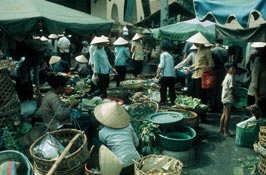
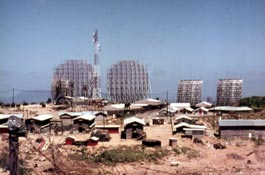
Left: The Vung TÃ u market.
Right: American radar has replaced the French antennas.
After the departure of French troops in April 1956 the base was taken over by American advisors and it became the headquarters for the Australian expeditionary corps as well as for certain American units.
It would again be occupied after 1975 by the Soviets who would run as a joint Russian-Vietnamese operation the âVietsovpetroâ company with the Vietnamese.
The French group, Total, (in partnership with Petrovietnam) operated two platforms offshore of Cape St. Jacques.
This region has become the petroleum center of Vietnam where gas and crude operations dominate the economy of the city and contribute to the main revenue, the budget of Vietnam, and to the export volume.
Uncontrolled construction of numerous hotels as well as an amusement park (with aerial tramway!) above the White Villa has unfortunately and definitively disfigured the coastline of this town.
Vung TÃ u in 2011...

